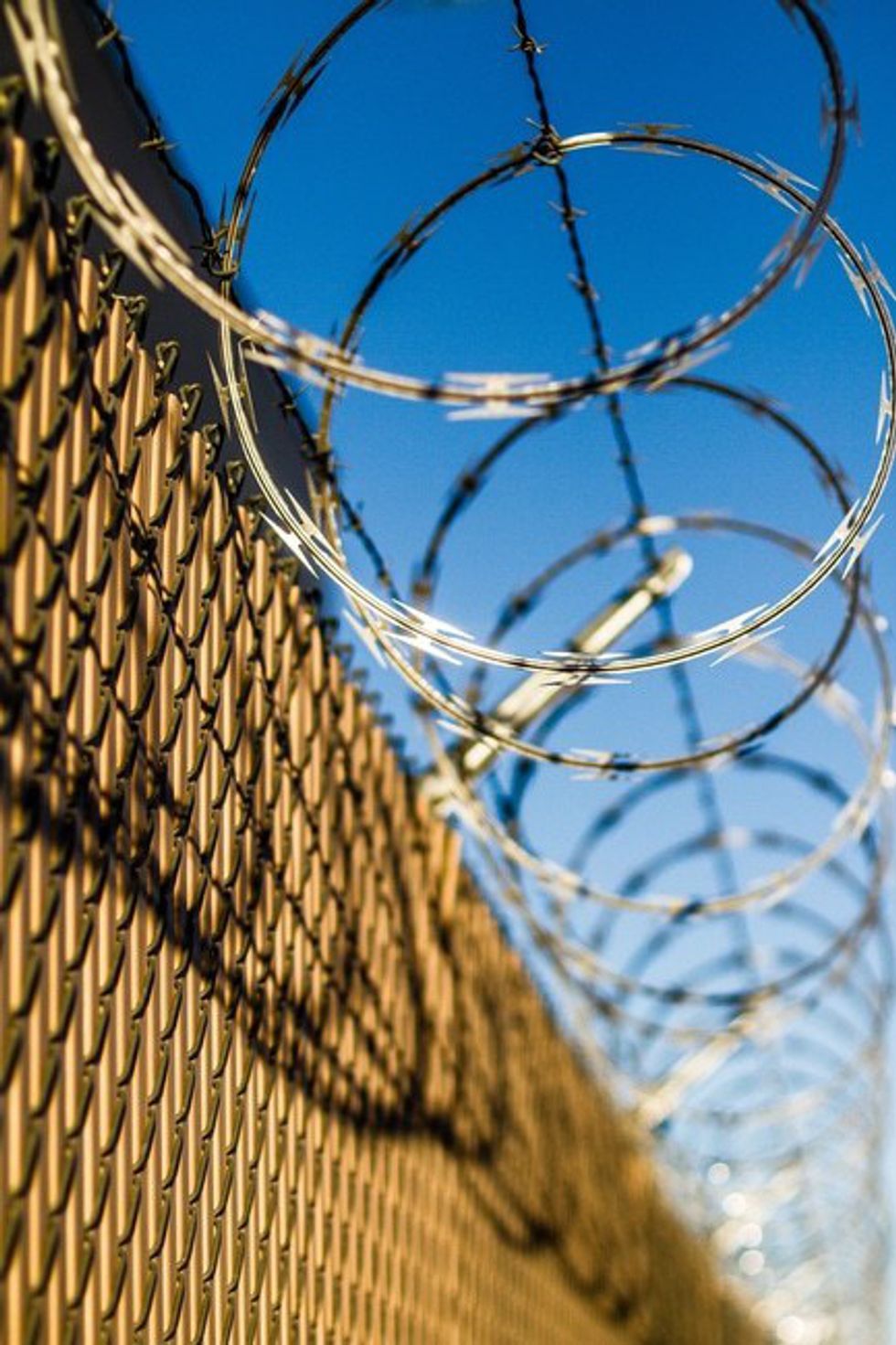On Thursday August 18th, the Deputy Attorney of the Department of Justice, General Sally Yates, released a memo detailing their plan to roll back the use of private prisons. Through DOJ studies, they found that private prisons are not kept to same standards of the bureaus prisons. The lack of safety measures, security, correctional services, rehabilitation programs, resources, and cost-savings led to their decision says Yates.
According the the DOJ's data, there are currently 30,000 inmates in federal private prisons and about 195,000 in all federal prisons. Yates says the prisons won't close overnight. Their plan is to forgo renewing current contracts as they end, and to amend others. They recently declined to renew a contract three weeks ago for 1,200 beds. A soon-to-end contract will be reduced from a maximum of 10,800 beds to 3,600. Three of more contracted prisons will end over the next year. By this time next year the Bureau of Prisons (BOP), under the DOJ, estimates a population decrease to 14,500.
While it comes as a victory for many fighting to end mass incarceration, it feels like a carrot dangling. The stick? There are many. This doesn't affect any private state prisons, where the vast majority of private prisons reside. In fact, there are only 13 federal prisons this falls under, all owned by Corrections Corporation of America, GEO Group, and Management and Training Corporation. According to a report by the Office of the Inspector General, these prisons were "primarily low security, criminal alien adult males with 90 months or less remaining to serve on their sentences." As the Washington Post points out, this won't touch Immigration and Customs Enforcement (ICE) nor US Marshals Service detainee either. Yates notes in her memo, " As you know, the Bureau also maintains contracts with private companies to operate hundreds of community-based Residential Reentry Centers, or "halfway houses," across the country. These facilities provide short-term transitional housing and community-based reentry services such as employment assistance." This is important.
Some even foresee an expansion of these types of facilities. "I think that the closing of these 13 facilities is going to usher in an era of expanded state and local jails, ‘community-based services’, and other forms of carceral expansion. Specifically, I think it’ll increase focus on immigrant detention/deportation because those people (mostly women and youth) are easily targets to dehumanize and marginalize in the public eye," says Oliver Zerrudo - a recent graduate with a dual major of Ethnic Studies and Political Science at the University of California - Berkeley, and California Campus Coordinator for Students for Sensible Drug Policy. He cites California as an example. The CA supreme court mandated that Gov. Brown, in his reelection, to reduce the prison overpopulation rate from ~150% to 130%. He was able to do be simply moving inmates from federal to local facilities. "The local sheriffs start using the rhetoric of a realignment. That lowering the federal incarceration number, by increasing the local number, is smart economically, because of the increased focus on services locally" What they saw was that the local communities started receiving federal grants to construct women’s jails, juvenile jails, mental health jails, gender responsive centers, detention centers, and halfway houses he said.
ICE houses nearly 400,000 inmates. But, nearly half of their facilities are privately run. Which means, if ICE takes the same stance as the BOP almost 200,000 inmates will be affected. They are an easy target to marginalize, especially with Donald Trump's anti-immigrant vitriol. They are a large "cash crop" for these private prisons, and it doesn't look like it'll be changing anytime soon. Out of site out of mind. Think Progress has a great full length article on this.
As Oliver points out, on the local level, we may see a boom in other carceral centers, such as halfway houses, and in New York three-quarter houses. They are also called Community Correction Centers (CCC) and Residential Reentry Centers (RRC). Halfway houses can be the last step in an inmates confinement. Their focus is on preparing the inmate for reentry into the community with drug treatment programs, job training, and other resources. Many of these facilities were privatized, as a way to cut back on state prison costs. One such organization is Community Education Center (CEC), which runs the majority of halfway houses in New Jersey and Pennsylvania. What was found out about these halfway houses, in a study done in PA and published in the New York Times, was abysmal.
They found that the recidivism of these halfway houses was actually higher than those inmates released straight to the streets. The study looked at 38 private and 14 state-run facilities. These facilities costs PA $110 million dollars a year, to be less effective than sending someone straight to the street. The state is now looking to revamp how it funds these facilities. Instead of the number of beds filled, they want to be looking at performance. But, not everyone is on board with that.
Chris Christie, Gov of Jersey, has long been a supporter of CEC. In fact, he was a lobbyist for them in the early 2000s. CEC set up a non-profit in the 1990s called Education Health Centers of America (EHCA). EHCA contracts with New Jersey to set up the halfway houses. These state and local contracts were worth nearly $71 million dollars in 2011 to CEC, which were awarded by EHCA. The states budget for private halfway houses? $110 million. Nearly three-quarters of the state's budget being funneled unscrupulously to CEC.
For what return? Recidivism and escapism are quite high in these facilities. Christie boasted that "only" 181 residents escaped in the first five months of 2012. One particular house, the Logan House ran by CEC, had 15 escapees in one night!
Of course, there could be many reasons for wanting to escape. Freedom is closer than it's ever been for the resident. But, some residents have come out about the darker side of halfway houses. Vanessa Falcone, reported to Prison Legal News, that she was forced to perform oral sex on a facilities worker. She said, "That started a few weeks of basically hell." When the worker was found out, Vanessa was moved to another facility and the worker fired, but not prosecuted by the law.
Another CEC resident was caught trying to escape by Joseph Chase, who then raped her several times. After the police searched his car and found drugs, he was prosecuted. CEC said it was an isolated incident. Even with this information, Christies spokesperson said that it's wrong to draw the same conclusions from the PA study to NJ.
But, my question is, when will we stop trying to profit off of our carceral system? We openly fund a war on drugs to arrest and prosecute non-violent drug offenders, just to make sure the DEA, state, and local police keeps their jobs. So that the private prisons get to keep their unfit facilities with low-paid workers? So that the companies supplying the inmates with phone services and food can extort large sums of money? So that when an inmate is about to finish their time, they're sent to a half-way house that does a worse job than his previous cell? All in the name of profit.
Jerry Otero, Founder and Director of Cre8tive YouTHI*ink, a nonprofit creative-arts social justice youth development organization says, "The american economy should not include locking people in cages for profit. Not in my name. It's a perversion of the fundamental function of government for the people."
Why do we want to keep 2.5 million people in a revolving trap door that we front the bill for? While I laud this recent decision as a victory, it can only be through a larger and continued push for the same on the state and local levels. This is the time to make sure this decision snowballs. I'm happy happy for the some 30k inmates who'll move to better facilities, yet I yearn the same for 200k immigrants, the 25k federal halfway houses residents, and the untold number of state halfway house attendees.
It's time to make a decision America. Do you care more for the profit of a man you'll never meet, and will not contribute a dime to society or your community? Or, are you ready to heal the wounds over 2 million brothers, sisters, aunts, uncles, dads, moms, grandfathers and grandmothers?
SOURCES
https://www.washingtonpost.com/news/post-nation/wp...
https://www.justice.gov/opa/file/886311/https://www.justice.gov/opa/blog/phasing-out-our-u...
https://thinkprogress.org/the-federal-government-i...
https://oig.justice.gov/reports/2016/e1606.pdf#pag...
http://www.prisonpolicy.org/reports.html
http://www.bjs.gov/index.cfm?ty=pbdetail&iid=4909
http://america.aljazeera.com/articles/2014/2/23/th...
https://theintercept.com/2016/08/18/justice-depart...
http://www.bjs.gov/content/pub/pdf/cpus14.pdf
https://www.americanprogress.org/issues/immigratio...
https://www.dhs.gov/sites/default/files/publicatio...
http://www.huffingtonpost.com/entry/medical-mariju...
https://www.prisonlegalnews.org/news/2015/jan/10/w...
https://avoicefromtheinside.wordpress.com/2013/03/...
http://famm.org/wp-content/uploads/2013/08/FAQ-Hal...
https://www.gmuace.org/documents/publications/2010...




















